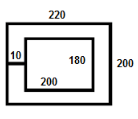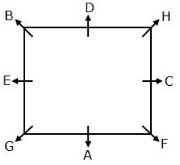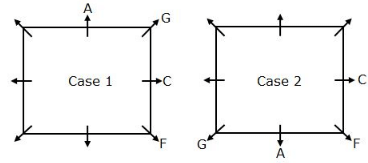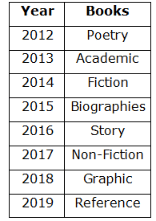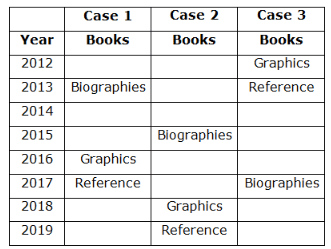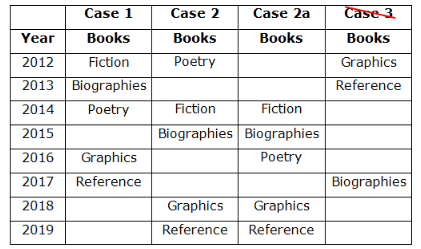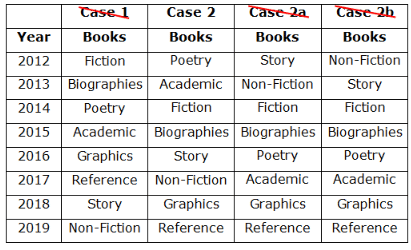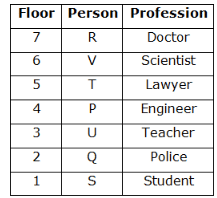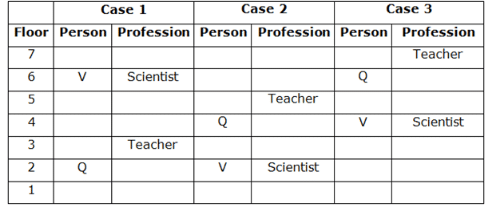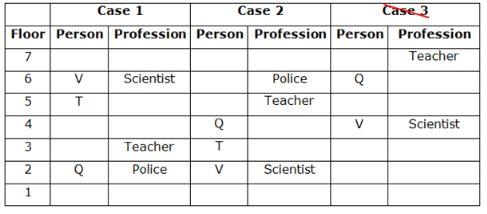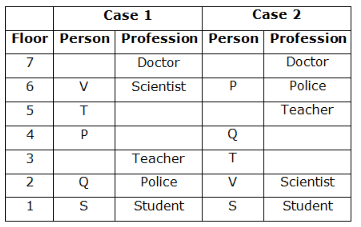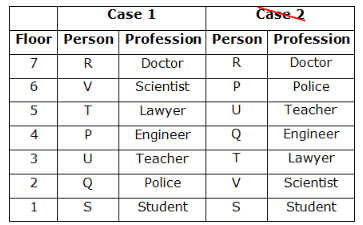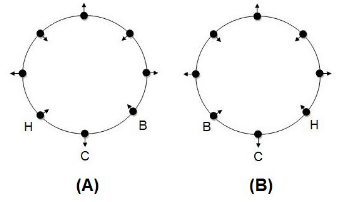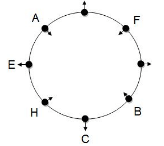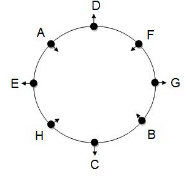PFRDA Assistant Manager Phase 1 Mock Test - 5 (Paper 1) - Insurance Exams MCQ
30 Questions MCQ Test PFRDA Assistant Manager Mock Test Series 2025 - PFRDA Assistant Manager Phase 1 Mock Test - 5 (Paper 1)
Directions: Read the following passage carefully and answer the questions given beside.
A powerful cyclonic storm named Fani (pronounced Foni) is headed towards the Odisha coast, with its landfall forecast near Puri Friday. Expected to generate storms with wind speeds as high as 200 km per hour, it has the potential to cause widespread damage in Odisha and neighbouring states. The last time such a powerful cyclonic storm had emerged in the Bay of Bengal at this time of the year, in 2008, it had killed more than 1.25 lakh people in Myanmar. But that was mainly because of the lack of a sophisticated warning system and enough logistical preparedness to evacuate people.
Fani, on the other hand, has been continuously monitored ever since it developed in the southeast of Sri Lanka about a week ago, warnings have been issued after every few hours to fishermen and people living in coastal regions, and a massive emergency preparedness has been mounted. In the last few years, India has impressively managed disasters caused by cyclones, most remarkably during Cyclone Phailin of 2013, which was even stronger than the approaching Fani.
The eastern coast of India is no stranger to cyclones. On an average, five to six significant cyclonic storms emerge in the Bay of Bengal region every year. The months of April and May just before the start of the monsoon, and then October to December immediately after the end of the monsoon, are the prime seasons for tropical cyclones.
Q. What are safety measures taken before arrival of Fani?
I. Continuous Monitoring of the cyclone is done.
II. Warnings to the affected people have been issued.
III. Research has been done to stop the cyclone.
II. Warnings to the affected people have been issued.
III. Research has been done to stop the cyclone.
Directions: Read the following passage carefully and answer the questions given beside.
A powerful cyclonic storm named Fani (pronounced Foni) is headed towards the Odisha coast, with its landfall forecast near Puri Friday. Expected to generate storms with wind speeds as high as 200 km per hour, it has the potential to cause widespread damage in Odisha and neighbouring states. The last time such a powerful cyclonic storm had emerged in the Bay of Bengal at this time of the year, in 2008, it had killed more than 1.25 lakh people in Myanmar. But that was mainly because of the lack of a sophisticated warning system and enough logistical preparedness to evacuate people.
Fani, on the other hand, has been continuously monitored ever since it developed in the southeast of Sri Lanka about a week ago, warnings have been issued after every few hours to fishermen and people living in coastal regions, and a massive emergency preparedness has been mounted. In the last few years, India has impressively managed disasters caused by cyclones, most remarkably during Cyclone Phailin of 2013, which was even stronger than the approaching Fani.
The eastern coast of India is no stranger to cyclones. On an average, five to six significant cyclonic storms emerge in the Bay of Bengal region every year. The months of April and May just before the start of the monsoon, and then October to December immediately after the end of the monsoon, are the prime seasons for tropical cyclones.
Q. Why number of casualties was higher in the cyclone that hit Myanmar in 2008?
I. Lack of Warnings issued to the people living in the affected areas.
II. Lack of preparedness to handle the cyclone.
III. Lack of information about the cyclone.
II. Lack of preparedness to handle the cyclone.
III. Lack of information about the cyclone.
Directions: Read the following passage carefully and answer the questions given beside.
A powerful cyclonic storm named Fani (pronounced Foni) is headed towards the Odisha coast, with its landfall forecast near Puri Friday. Expected to generate storms with wind speeds as high as 200 km per hour, it has the potential to cause widespread damage in Odisha and neighbouring states. The last time such a powerful cyclonic storm had emerged in the Bay of Bengal at this time of the year, in 2008, it had killed more than 1.25 lakh people in Myanmar. But that was mainly because of the lack of a sophisticated warning system and enough logistical preparedness to evacuate people.
Fani, on the other hand, has been continuously monitored ever since it developed in the southeast of Sri Lanka about a week ago, warnings have been issued after every few hours to fishermen and people living in coastal regions, and a massive emergency preparedness has been mounted. In the last few years, India has impressively managed disasters caused by cyclones, most remarkably during Cyclone Phailin of 2013, which was even stronger than the approaching Fani.
The eastern coast of India is no stranger to cyclones. On an average, five to six significant cyclonic storms emerge in the Bay of Bengal region every year. The months of April and May just before the start of the monsoon, and then October to December immediately after the end of the monsoon, are the prime seasons for tropical cyclones.
Q. Which of the following places is termed as the birth place of most of the cyclonic storms?
Directions: Read the following passage carefully and answer the questions given beside.
A powerful cyclonic storm named Fani (pronounced Foni) is headed towards the Odisha coast, with its landfall forecast near Puri Friday. Expected to generate storms with wind speeds as high as 200 km per hour, it has the potential to cause widespread damage in Odisha and neighbouring states. The last time such a powerful cyclonic storm had emerged in the Bay of Bengal at this time of the year, in 2008, it had killed more than 1.25 lakh people in Myanmar. But that was mainly because of the lack of a sophisticated warning system and enough logistical preparedness to evacuate people.
Fani, on the other hand, has been continuously monitored ever since it developed in the southeast of Sri Lanka about a week ago, warnings have been issued after every few hours to fishermen and people living in coastal regions, and a massive emergency preparedness has been mounted. In the last few years, India has impressively managed disasters caused by cyclones, most remarkably during Cyclone Phailin of 2013, which was even stronger than the approaching Fani.
The eastern coast of India is no stranger to cyclones. On an average, five to six significant cyclonic storms emerge in the Bay of Bengal region every year. The months of April and May just before the start of the monsoon, and then October to December immediately after the end of the monsoon, are the prime seasons for tropical cyclones.
Q. Which of the following is true with respect to the passage?
I. Phailin was weaker than Fani.
II. The disaster management failed to managed cyclones like Phailin.
III. Fani has been continuously monitored since its beginning.
Direction: In each of the questions given below, a paragraph is given which has some blanks and those blanks have to be filled with the same word out of five words given below it. You have to choose that same word as your answer and fill up the blanks with that appropriate word.
The way that he is progressing in life it can be said that he has quite a ____________ future. If something is not done to correct this, nobody will be able to change this ____________ picture that is being painted by him only. This can well be understood from the ____________ look in the eyes of his parents and teachers.
Direction: Each question below has one blank, which is indicating that something has been omitted. Find out which option can be used to fill up the blank in the sentence in the same sequence to make it meaningfully complete.
Buying a home is one of the most _____________ financial decisions we need to take.
Directions: The sentence given below has been divided into four parts and these parts have been jumbled up. You must choose the option which gives the correct sequence of the parts.
was presented with a list of words (A) / in one study in Australia, (B) / a group of seven-to-10-year-olds (C) / and asked to read some silently, and others aloud (D)
Directions: In the given question, a word has been mentioned and there are three ways in which the word has been used in either similar or different ways. You are required to check which of the sentences have correctly used the highlighted word, and mark that as your answer.
Bolt
I. A bolt of lightning pierced the angry black clouds, and Ms. Nirahika moved away from the edge of the porch.
II. Seeing an unidentified figure in the dark, all the kids bolted down the stairs.
III. A surge in the crowd behind him bolted him forwards.
What will come in place of the question mark?
1, 2, 6, 24, 120, 720, ?
Study the following information carefully and answer the questions given below.
There are four different departments ECE, EEE, CSE and IT in an engineering college. The number of boys in ECE department is 100 more than the number of girls in that department and the number of girls in ECE department is 100% more than the number of girls in EEE department. Number of boys in EEE department is equal to the number of girls in ECE department. Number of boys in EEE department is twice the number of girls in the same department. Total number of students in CSE department is 400 and number of boys in CSE department is 100 less than the number of boys in ECE department. Girls in CSE department are 200. Average number of girls in ECE and IT department together is 175. Number of boys in IT department is half the number of boys in CSE department.
Number of girls in CSE department is how much percent less than the number of boys in ECE department?
Study the following information carefully and answers the questions given below.
Quantity I: Banku invested Rs. 23,500 in a scheme X at 15% per annum at simple interest rate for 4 years and Rs. 45,000 in a scheme Y at 10% per annum at simple interest for 3 years. If the difference between the interest earned from both the schemes is 'a' then find the value of 'a'?
Quantity II: Tinku invested Rs. 37,500 in a scheme A at 8% per annum compound interest rate for 5 years and Rs. 27,900 in a scheme B at 25% per annum compound interest rate for 3 years. If the difference between the amounts earned from both the schemes is 'b', then find the value of 'b'?
A street of width 10 m surrounds, from outside, a rectangular garden whose dimensions are 200 m × 180 m. The area of the street (in square metres) is
There are three watches, out of which one loses 1 sec every minute and one gains 1 sec every minute. All the watches are set at 10 a.m. and an alarm is activated so that each watch beeps for 1 sec after completing 1 minute. The three watches beep together when set at 10 a.m. at the beginning. At what time will they beep together again?
Study the following information carefully and answer the below questions:
Eight persons viz. A, B, C, D, E, F, G and H are seated on a square table such that all the persons are facing away from the centre, but not necessarily in the same order. Four persons are seated on the corners while four persons are seated on the middle of each side.
G sits two persons away from F who sits to the immediate right of C who doesn’t sit at any of the corners. The number of persons from the right of F to G is the same as the number of persons from the left of A to C. Only two persons sit between A and B.E sits to the immediate left of B. H sits to the immediate right of D but neither adjacent to A nor E.
Who among the following person sits to the immediate left of C?
Directions: Read the following information and answer the given question.
Bankattlal acted as a judge for a beauty contest. There were four participants viz. Ms. Andhra Pradesh, Ms. Uttar Pradesh, Ms. West Bengal and Ms. Maharashtra. Mrs. Bankattlal, who was very anxious about the result, asked him about it as soon as he was back home. Bankattlal just told that the one who was wearing the yellow saree won the contest. When Mrs. Bankattlal pressed for further details, he elaborated as follows:
(1) All of them were sitting in a row.
(2) All of them wore the sarees of different colours viz. green, yellow, white and red.
(3) There was only one runner up and she was sitting beside Ms. Maharashtra.
(4) The runner up was wearing the green saree.
(5) Ms. West Bengal was not sitting at one of the ends and was not a runner up.
(6) The winner and the runner up were not sitting adjacent to each other.
(7) Ms. Maharashtra was wearing the white saree.
(8) Ms. Andhra Pradesh was not wearing the green saree.
(9) Participants wearing the yellow saree and white saree were at the ends.
Which coloured saree was worn by Ms. Andhra Pradesh?
Study the following information carefully and answer the below questions:
Eight types of books viz. Academic, Biographies, Fiction, Graphics, Non-Fiction, Poetry, Reference and Story were published in different years from 2012 to 2019, but not necessarily in the same order.
Biographies were published in an odd-numbered year but not the last. Only three books were published between Biographies and Reference which was published immediately after Graphics. Fiction was published four years before Graphics. Only one book was published between Fiction and Poetry. Atleast three years are there between the publication of Non-Fiction and Academic which was not published in consecutive years with Story. Academics were not published immediately before Graphics.
Which of the following book was published in 2016?
Study the following information carefully and answer the below questions:
An alpha numeric arrangement machine when given an input, rearranges them by following a particular rule in each step. The following is an illustration of input and steps rearrangement.
INPUT: B 4 S K @ J 3 * T R U F ^ + W I 6 2 # H
STEP 1: R T * 3 J @ K S 4 B U F ^ + W I 6 2 # H
STEP 2: R T * 3 J @ K S 4 2 U 6 ^ + W 9 6 2 # 8
STEP 3: R T * 2 2 J @ K 3 4 S U ^ 6 6 + W # 8 9
STEP 1: S U * 2 2 K @ L 3 4 T V ^ 6 6 + X # 8 9
STEP 5: S U 2 2 K L 3 4 T V 6 6 X 8 9 * @ ^ + #
STEP 6: X V U T S L K 2 2 3 4 6 6 8 9 * @ ^ + #
STEP 6 is the last and final step of the rearrangement. As per the rules followed in the above steps, find out in each of the following questions the appropriate step for the following input.
INPUT: N 4 J * & S F 3 # 9 H 5 ^ 7 + U $ R G @
Taking square root to the sum of all the numbers in the last step, which of the following number is obtained?
Study the following information carefully and answer the below questions:
Five persons – P, Q, R, S and T have some number of chocolates and are arranged in increasing order of chocolates from left to right. The difference between each of the number is a consecutive multiple of 4. Q stands second from the left end and is two persons away from T. Only one person stands between P and S, who has the lowest number of chocolates which is 100. The difference between the number of chocolates of P and T is 24.
If all the persons stand in alphabetical order from left to right, then how many persons remain unchanged in their position?
Study the following information carefully and answer the below questions:
Seven persons viz. P, Q, R, S, T, U and V are staying in a seven storey building, but not necessarily in the same order. Each of them is of a different profession viz. Doctor, Engineer, Lawyer, Police, Scientist, Student and Teacher. Not more than one person from the same profession stays on the same floor. The lowermost floor is numbered 1 and the floor immediately above is numbered 2 and so on.
Q stays on an even-numbered floor and immediately below the one who is a Teacher. Only two floors are there between the one who is a Teacher and V, who is a Scientist. The number of floors above V is the same as the number of floors below the one who is the Police. T stays three floors away from the one who is the Police. S is a Student but doesn’t stay above Q. The number of floors between Q and S is the same as the number of floors between T and P. The one who is a Doctor stays on the topmost floor. R is not a Teacher whereas T is not an Engineer. The one who is a Lawyer doesn’t stay below U.
The number of floors above the one who is a Scientist is the same as the number of floors below the one who is a _____.
Directions: Study the following information carefully and answer the question given below.
A word and number arrangement machine, when given an input line of words and numbers, rearranges them following a particular rule.
Following is an illustration of input and the rearrangement:
Input: each still 59 home 78 18 money 43 with 28 97 zoo
Step I: 97 each still 59 home 78 18 money 43 with 28 zoo
Step II: 97 zoo each still 59 home 78 18 money 43 with 28
Step III: 97 zoo 78 each still 59 home 18 money 43 with 28
Step IV: 97 zoo 78 with each still 59 home 18 money 43 28
Step V: 97 zoo 78 with 59 each still home 18 money 43 28
Step VI: 97 zoo 78 with 59 still each home 18 money 43 28
Step VII: 97 zoo 78 with 59 still 43 each home 18 money 28
Step VIII: 97 zoo 78 with 59 still 43 money each home 18 28
Step IX: 97 zoo 78 with 59 still 43 money 28 each home 18
Step X: 97 zoo 78 with 59 still 43 money 28 home each 18
Step XI: 97 zoo 78 with 59 still 43 money 28 home 18 each
Step XI is the last step of the arrangement of the above input as the intended arrangement is obtained.
As per the rules followed in the above steps, answer the question that follows based on the input given below:
Input: long done 37 gang 51 young 107 63 tin 25 vehicle 89
How many steps would be needed to complete this arrangement?
Directions: Read the following information carefully and answer the given question.
Eight friends A, B, C, D, E, F, G and H are sitting around a circular table at equal distances from each other. Four of them are facing the centre and the rest are facing opposite to the centre. Every person who is facing the centre has the immediate neighbours facing opposite to the centre. H is not an immediate neighbour of F. C is an immediate neighbour of H and B. F is sitting third to the right of E. H is second to the right of A. C is facing opposite to the centre. B is not sitting immediate next to D.
Who among the following is facing opposite to the centre?
Consider the following pairs related to the lac insect and its role in pigment production:
1. Lac Insect Life Cycle: Hemimetabolous - Egg, Nymph Instars, Pupa, Adult
2. Lac Insect Reproduction: Ovoviviparous - Eggs hatch within the body, live young are born
3. Primary Host Plants: Flame of the Forest - Known for lac cultivation
4. Main Lac Producing Genus: Laccifer - Sole genus for commercial lac production
How many pairs given above are correctly matched?
What was the focus of the 2025 G7 Summit held in Alberta, Canada?
A loan granted for short duration crops will be treated as NPA, if the instalment of principal or interest thereon remains overdue for________.
Which bank has introduced the first floating ATM in India?
A Non-Banking Financial Company (NBFC) is a company registered under _________.
Which of the following are the components of an ATM?
____________ is India's apex regulatory organization for licensing and regulating micro, small and medium-sized enterprise financial companies.
__________ is a classification used by financial institutions for loans and advances on which the principal is past due and on which no interest payments have been made for some time.




